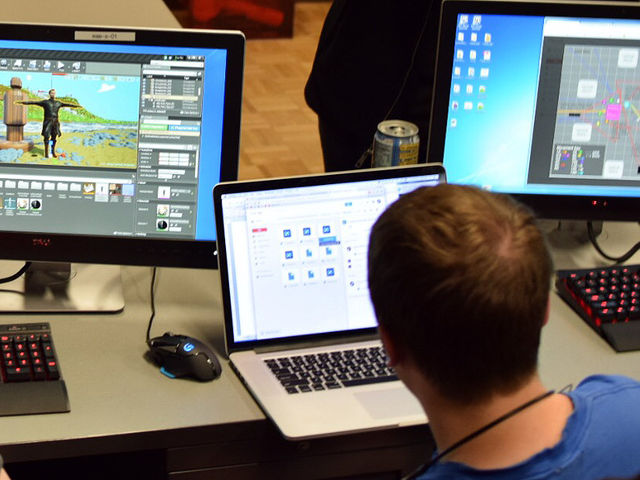The Princeton Review named the U’s Entertainment Arts & Engineering (EAE) program number one in the world for undergraduate students studying game design.
This is a jump from last year’s ranking at number two. The graduate program is ranked number three this year and has been in the top five since 2013.
The EAE program, which began in 2007, offers an undergraduate emphasis that both fine arts and engineering students can take. Bob Kessler, executive director of the program and a professor in the School of Computing, estimates about 400 undergraduate students are working toward an EAE emphasis with 111 graduate students working toward an EAE masters of games studio.
Kessler said game design is exploding as an industry, especially as games and apps become more mobile. What makes the U’s program so successful are several “secret sauce” items, he said.

“Artists and engineers are in the class together, and they are working on projects together,” he said. “So, they are both learning their disciplines and they are learning games and they are learning to work together.”
Students in the program work in group projects ranging in size from three to fifteen. Their final year, students must create and publish a game — Danielle Powers, a senior in film and media arts, believes this is what makes the U stand out.
“That’s really the last 10 percent that a lot of other programs, well, really, any other program doesn’t do,” she said.
Since 2010, the program has published 30 games: 19 undergraduate and 11 graduate. Another 11 will publish this year. Students have to come up with the idea and get it approved, Kessler said. Some of the companies they have created are still around.
Powers said the experiences they gain make them marketable for jobs after graduation, and faculty and staff members help students improve their resumes and get interviews with major companies. She attended the Game Developer’s Conference in San Francisco with the department last week and had opportunities to network with companies.
The Princeton Review takes into account academic courses, graduates’ starting salaries and the lab facilities, something Kessler hopes will continue to improve as the EAE program moves into the former law library building this fall.
@carolyn_webber


